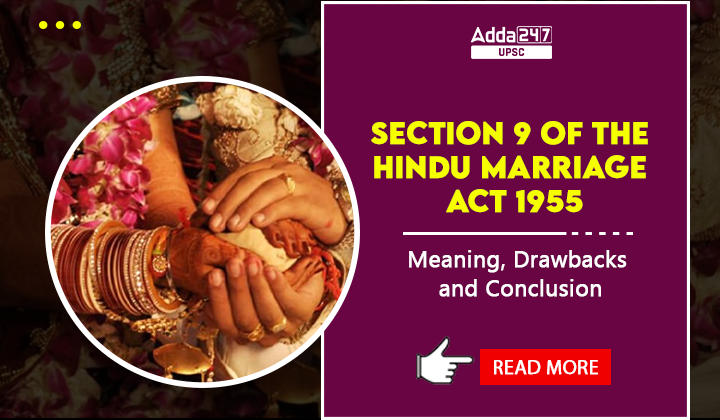Table of Contents
The Hindu Marriage Act, of 1955, is a landmark legislation in India that governs marriages among Hindus, Buddhists, Jains, and Sikhs. Enacted by Parliament as part of the Hindu Code Bills, the Act codifies and reforms Hindu marriage laws, introducing various provisions to regulate the solemnization, rights, obligations, and dissolution of marriages within these communities. This article provides an overview of the Hindu Marriage Act, of 1955, focusing on its key features, structure, applicability, and the legal framework it establishes for divorce.
What is the Hindu Marriage Act?
The Hindu Marriage Act, 1955, is a crucial piece of legislation that governs the solemnization and legal aspects of Hindu marriages in India. It applies to Hindus, including those who practice Buddhism, Jainism, and Sikhism, and lays down the conditions necessary for a valid marriage. The Act aims to protect the rights of individuals entering into marriage and provides legal recourse in cases of marital disputes. It also specifies the conditions under which a marriage may be declared void or voidable and the grounds for seeking a divorce.
Features of the Hindu Marriage Act
The Hindu Marriage Act, 1955, introduced several significant features to safeguard the rights and interests of individuals involved in Hindu marriages. Key features include the prohibition of bigamy, the recognition of equal rights for both spouses, and the establishment of legal grounds for divorce, such as cruelty, adultery, desertion, and conversion. The Act also emphasizes the importance of mental capacity and consent in marriage, ensuring that both parties are of sound mind and capable of understanding the implications of their union.
Structure of the Hindu Marriage Act
The Hindu Marriage Act is organized into six Chapters, comprising a total of 29 Sections. These Chapters cover various aspects of marriage, including the preliminary definitions, conditions for a valid marriage, ceremonies for solemnizing a marriage, restitution of conjugal rights, judicial separation, nullity of marriage, divorce, and maintenance. The Act provides a comprehensive legal framework that addresses all key aspects of marriage, from its inception to its dissolution.
Applicability of Hindu Marriage Act, 1955
The Hindu Marriage Act, 1955, applies to Hindus by religion, including Buddhists, Jains, and Sikhs. It also extends to individuals who are not Muslim, Christian, Parsi, or Jew by religion. The Act covers marriages where both parties are Hindus and those where one party is a Hindu, and the other is not a Muslim, Christian, Parsi, or Jew. It applies to all Hindu marriages solemnized in India or abroad, provided the conditions specified in the Act are fulfilled. The Act is also applicable to individuals domiciled in India who do not fall under other personal laws.
Important Sections of Hindu Marriage Act, 1955
Several Sections of the Hindu Marriage Act, 1955, are particularly noteworthy:
- Section 5: Specifies the conditions for a valid marriage, including the minimum age for the bride and groom and the absence of prohibited relationships.
- Section 9: Addresses the restitution of conjugal rights, allowing a spouse to seek the Court’s intervention if the other spouse withdraws from the marriage without reasonable cause.
- Section 13: Lays down the grounds for divorce, such as cruelty, adultery, desertion, conversion, and incurable diseases.
- Section 24: Provides for maintenance and alimony during the pendency of legal proceedings, ensuring financial support for the spouse who lacks independent income.
Purpose of the Hindu Marriage Act
The primary purpose of the Hindu Marriage Act, 1955, is to update and codify the laws governing Hindu marriages in India. The Act seeks to provide a uniform legal framework for marriages, ensuring the protection of the rights and interests of Hindu brides and grooms. By codifying these laws, the Act aims to bring clarity and consistency to the legal requirements for a valid Hindu marriage and address various aspects of marital life, including divorce, maintenance, and guardianship.
Divorce under the Hindu Marriage Act, 1955
The Hindu Marriage Act, 1955, revolutionized Hindu matrimonial law by introducing the concept of divorce. Before the enactment of this law, Hindu marriages were considered indissoluble. Section 13 of the Act provides various grounds for divorce, allowing either spouse to seek a dissolution of the marriage if specific conditions are met. These grounds include adultery, cruelty, desertion, mental disorder, and conversion to another religion. The Act also allows for divorce by mutual consent, a provision introduced in 1976, making it easier for couples to end their marriage amicably.
Conclusion
The Hindu Marriage Act, 1955, is a comprehensive legal framework that governs Hindu marriages in India. It provides essential guidelines for the solemnization, registration, and dissolution of marriages, ensuring that the rights and obligations of spouses are upheld. The Act has played a significant role in modernizing Hindu matrimonial law, introducing concepts like divorce and maintenance while preserving the sanctity of marriage. Through its various provisions, the Hindu Marriage Act continues to serve as a cornerstone of family law in India, offering legal protection and recourse to individuals in the Hindu community.



 TSPSC Group 1 Question Paper 2024, Downl...
TSPSC Group 1 Question Paper 2024, Downl...
 TSPSC Group 1 Answer key 2024 Out, Downl...
TSPSC Group 1 Answer key 2024 Out, Downl...
 UPSC Prelims 2024 Question Paper, Downlo...
UPSC Prelims 2024 Question Paper, Downlo...




